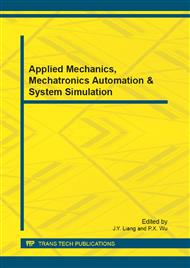p.790
p.795
p.799
p.803
p.808
p.814
p.819
p.824
p.828
Design of Villages and Towns Flood Disaster Simulation and Emergency Decision Support System
Abstract:
China is a country prone to natural disasters, especially the flood disaster. In order to improve the villages and towns flood emergency management, through a series of methods such as information management and simulation, the establishment of emergency decision support using information technology to reduce losses caused by floods, the visualization technology is used in the virtual reconstruction model of floods, intuitive way to simulate the dynamic spread of the process of the flood disaster, in a safe and economical method to obtain the number of indicators of disaster-related decision. It provides a new method and ideas, and then it gives a reliable basis for the flood prevention and emergency management. The visualization analysis and decision is achieved for the villages and towns flood control, and it provides great support for the villages and towns flood mitigation and prevention. The result shows that the system is useful and meaningful in the town flood mitigation.
Info:
Periodical:
Pages:
808-813
Citation:
Online since:
September 2012
Authors:
Keywords:
Price:
Сopyright:
© 2012 Trans Tech Publications Ltd. All Rights Reserved
Share:
Citation:


